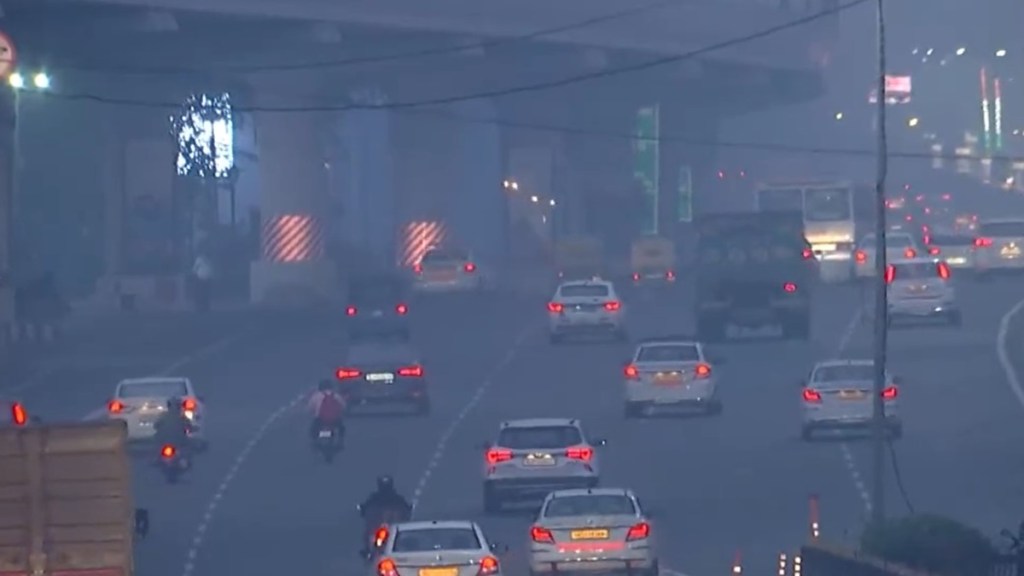The Air Quality Index (AQI) in Delhi and Noida continued to remain in the ‘very poor’ category on Monday morning, with an AQI of 322 in Delhi and 324 in Noida, according to the latest reports from SAFAR-India.
This is an alarming situation for the residents of the Delhi-NCR region, as, despite the implementation of a 15-point winter action plan to reduce rising pollution, there has been no significant change in the air quality, ANI reported.
Initiatives like ‘Red Light on, Gaadi off’ are in motion to address vehicular and biomass-burning emissions that contribute to the rising PM2.5 levels. The haze is likely to persist with a ‘very poor’ air quality forecast for the region from October 29 to 31, 2023.
On Sunday as well, the air quality in the national capital was recorded in the ‘very poor’ category, with an AQI of 322 in Delhi and 324 in Noida, according to the System of Air Quality and Weather Forecasting and Research (SAFAR)-India.
Also Read:Smog shrouds Delhi as air quality dips to ‘very poor’ category, AQI at 306
Earlier on Friday, Delhi Environment Minister Gopal Rai stated that the implementation of the 15-point winter action plan is being carried out step by step to curb the increasing pollution.
“Delhi Chief Minister Arvind Kejriwal had earlier announced a 15-point winter action plan to curb pollution caused by vehicles, biomass burning, dust, etc. Now this plan is being implemented on the ground one by one to reduce pollution in the national capital,” Rai told ANI.
The Delhi minister said that since one of the major causes of pollution is vehicles, they had started the ‘ Red light on, Gaadi off’ campaign on Thursday. “Now the data says that in AQI the level of particulate matter (PM) 10 is decreasing and that of PM 2.5 is increasing. This means that pollution caused by vehicles and biomass burning is increasing,’ the Delhi Minister said.
What is Air Quality Index (AQI)?
The Air Quality Index (AQI) is a vital tool for effectively communicating air quality status in an easily understandable manner to the public. It consists of six AQI categories: Good, Satisfactory, Moderately Polluted, Poor, Very Poor, and Severe.
Each category is determined based on the levels of ambient concentrations of air pollutants and their potential health impacts, known as health breakpoints. According to the AQI scale, air quality falls into the following ranges: 0 to 50 is “good,” 51 to 100 is “satisfactory,” 101 to 200 is “moderate,” 201 to 300 is “poor,” 301 to 400 is “very poor,” and 401 to 450 is “severe.”
(With ANI inputs)

